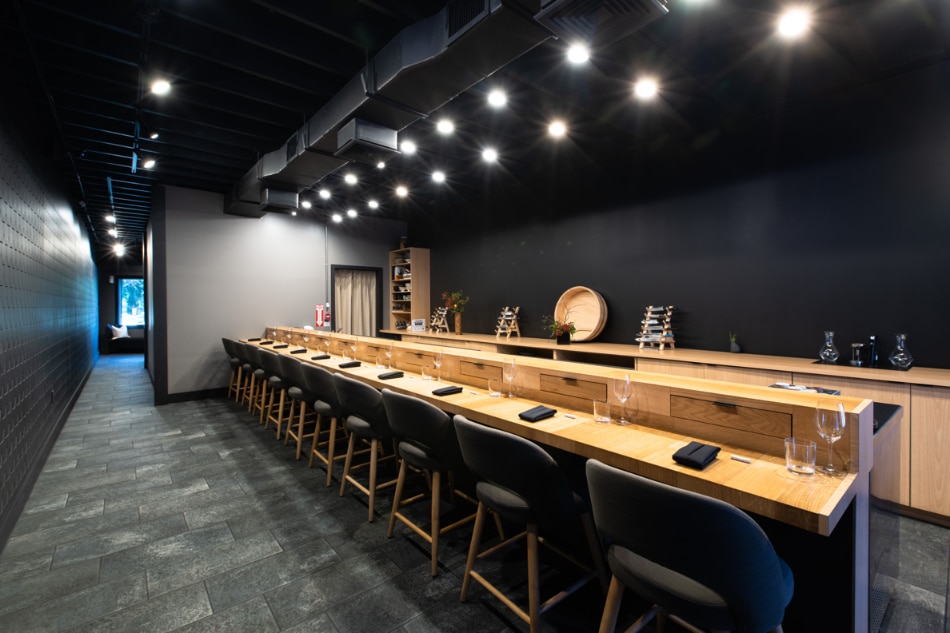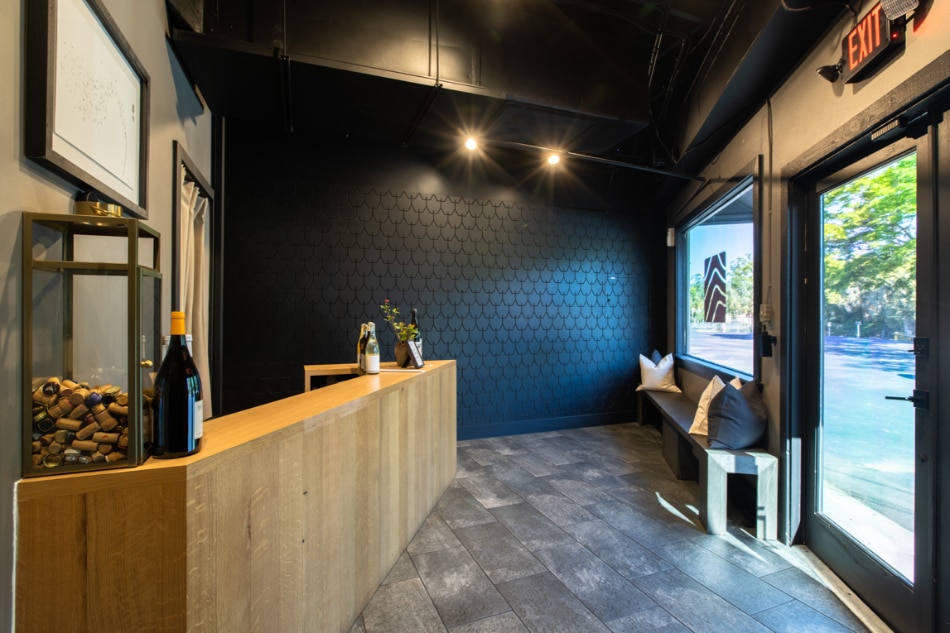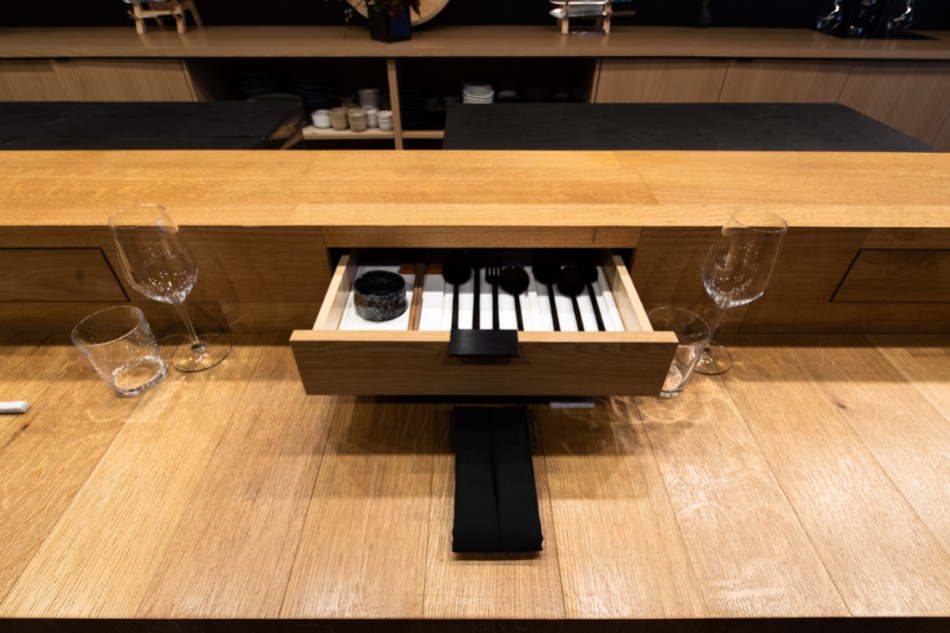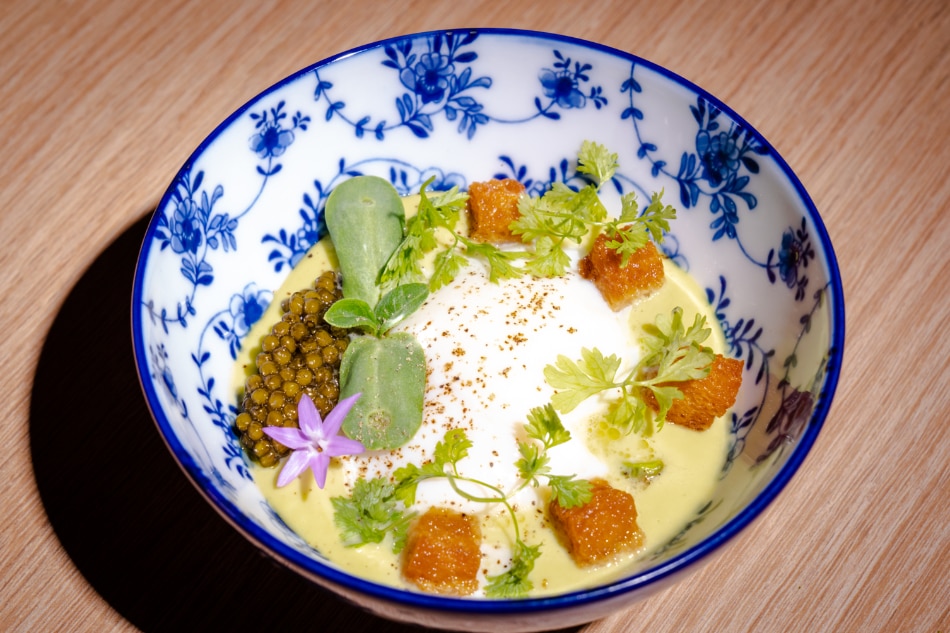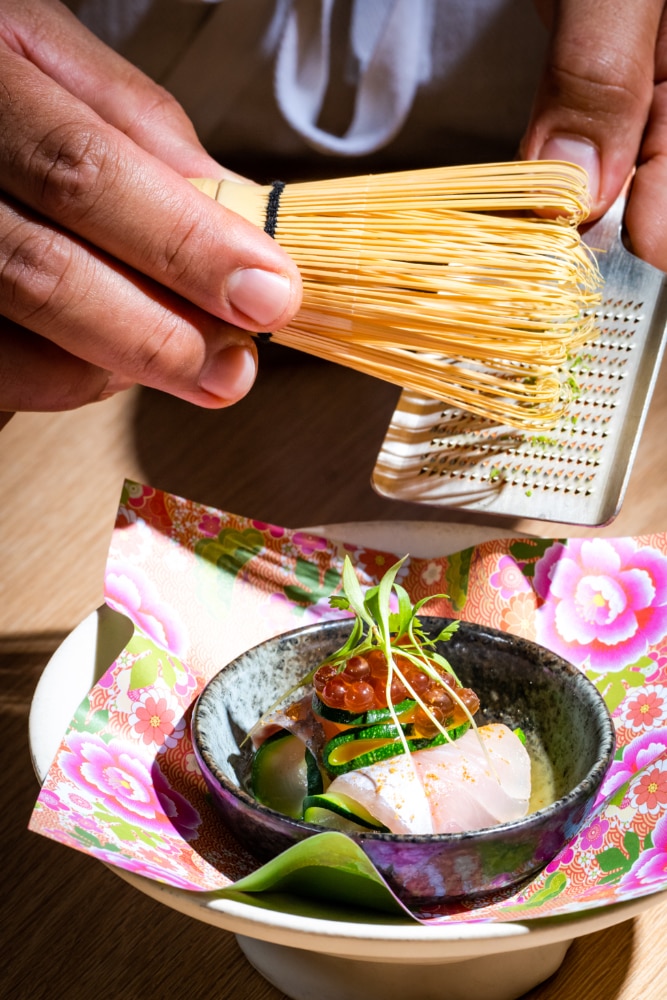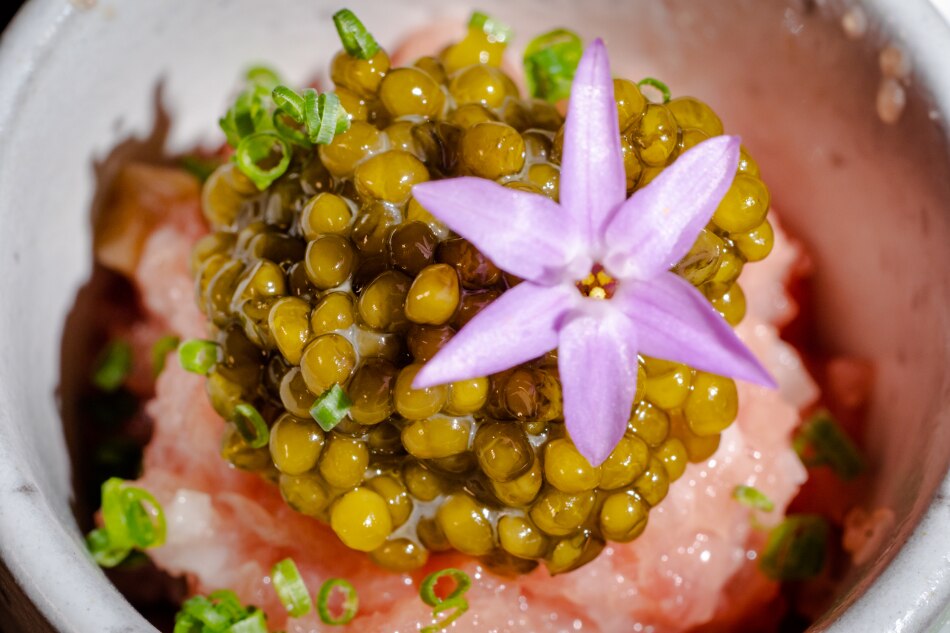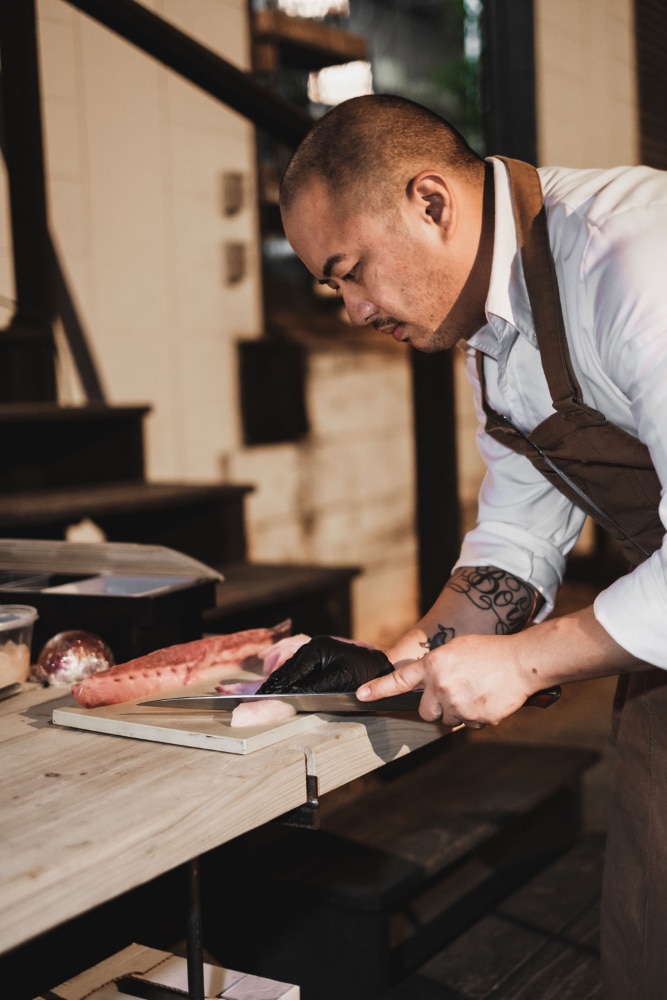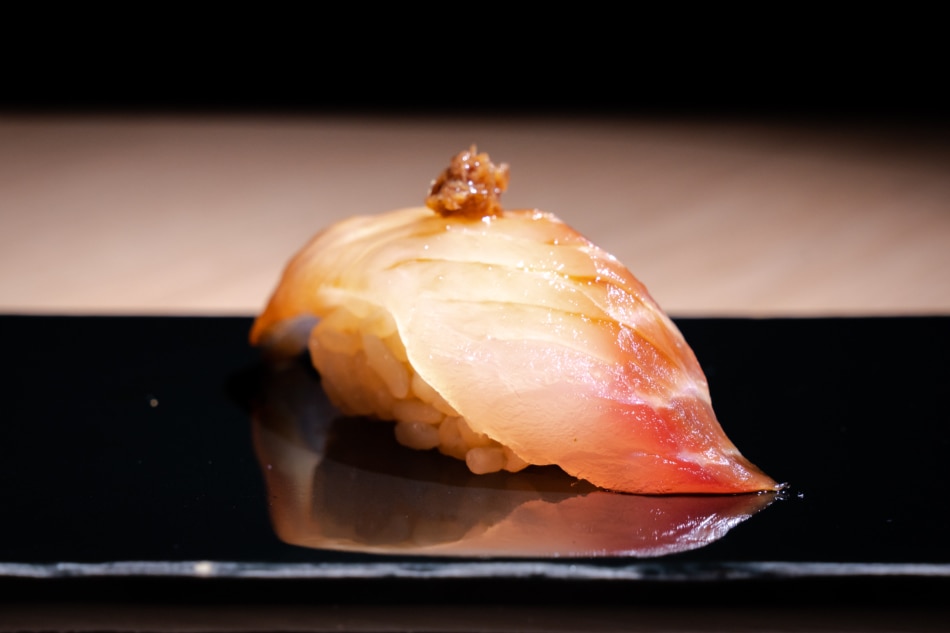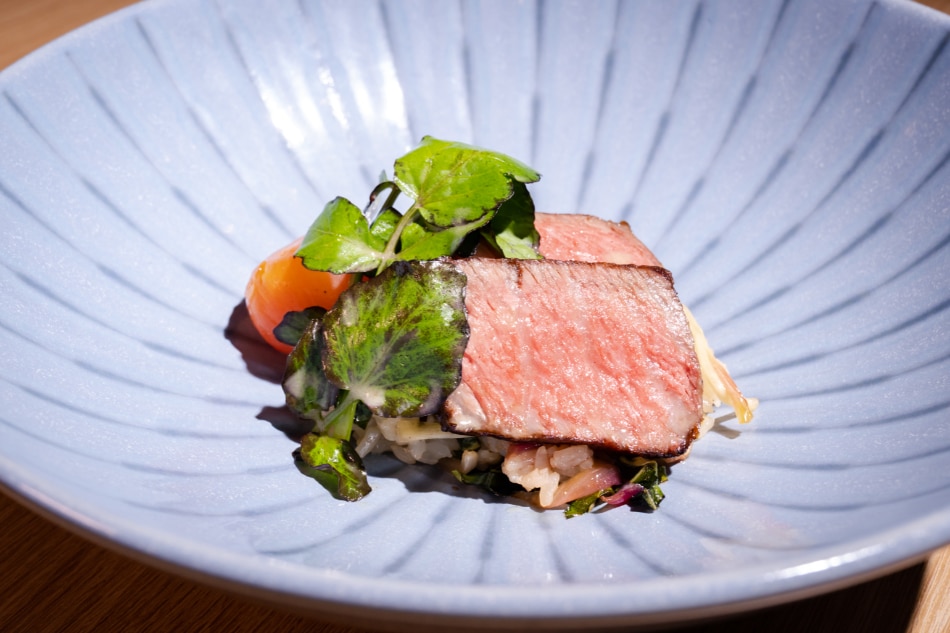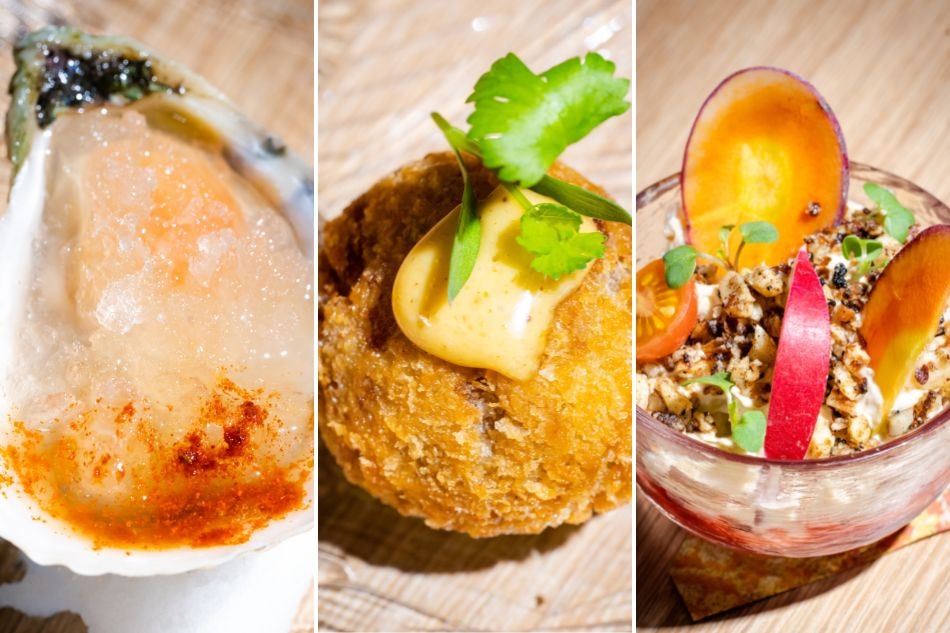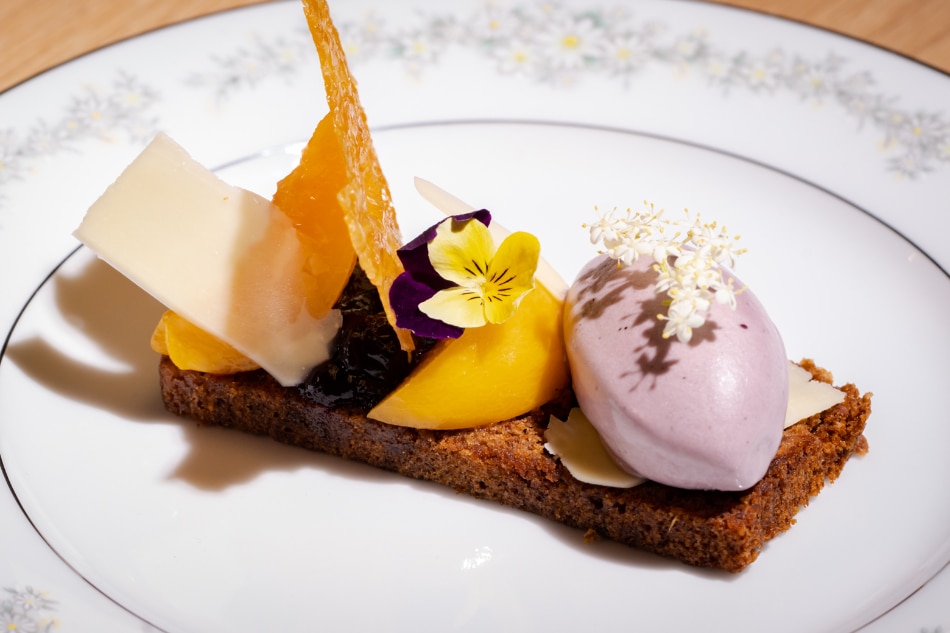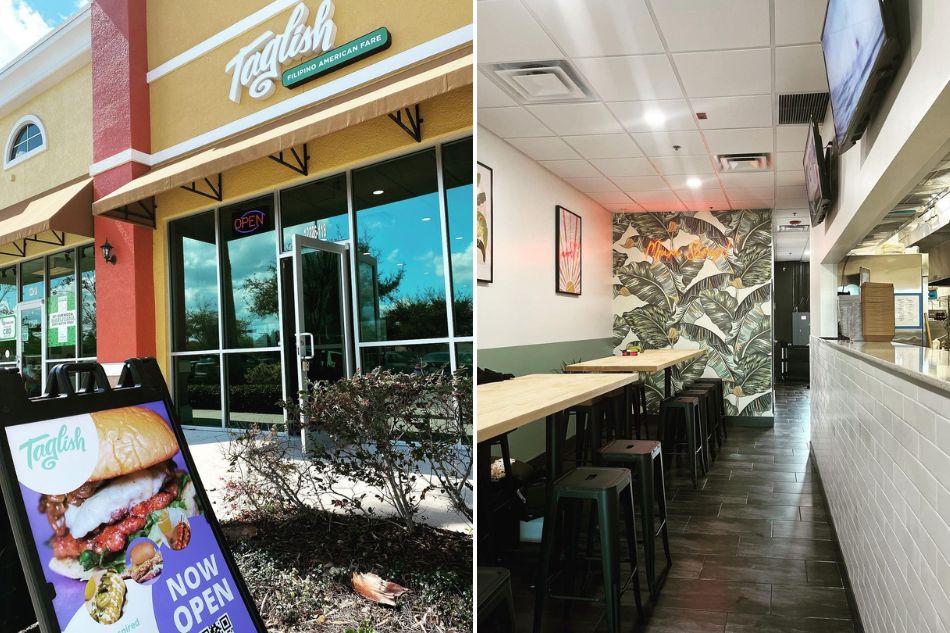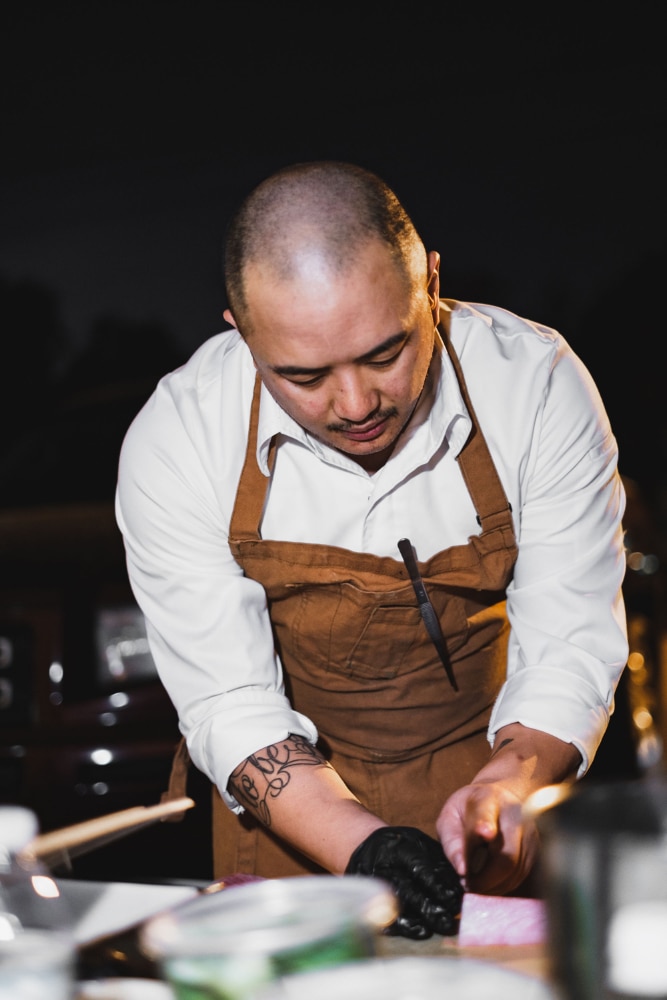This Filipino chef just earned his first Michelin star | ABS-CBN

Welcome, Kapamilya! We use cookies to improve your browsing experience. Continuing to use this site means you agree to our use of cookies. Tell me more!
This Filipino chef just earned his first Michelin star
This Filipino chef just earned his first Michelin star
RHIA GRANA
Published Jun 19, 2022 07:04 PM PHT
|
Updated Jun 20, 2022 08:22 AM PHT
He’s worked under the guidance of world-renowned Michelin-starred chefs Joël Robuchon, Wolfgang Puck, Eric Ripert, Masa Takayama, and Jennifer Carroll. But just recently, Filipino-American chef Michael “Mike” Collantes was recognized for work that is entirely of his own vision. Collantes’ Japanese restaurant in W. Fairbanks Ave., Florida called Soseki Modern Omakase was recently awarded its first Michelin star.
He’s worked under the guidance of world-renowned Michelin-starred chefs Joël Robuchon, Wolfgang Puck, Eric Ripert, Masa Takayama, and Jennifer Carroll. But just recently, Filipino-American chef Michael “Mike” Collantes was recognized for work that is entirely of his own vision. Collantes’ Japanese restaurant in W. Fairbanks Ave., Florida called Soseki Modern Omakase was recently awarded its first Michelin star.
Collantes is obviously thrilled with this new feat. It was only March of last year when he opened Soseki, the ten-seater, five-nights-a-week fine dining restaurant. “I never thought that Michelin Guide will come to our place here to Florida. So we’re very thankful for it,” he says.
Collantes is obviously thrilled with this new feat. It was only March of last year when he opened Soseki, the ten-seater, five-nights-a-week fine dining restaurant. “I never thought that Michelin Guide will come to our place here to Florida. So we’re very thankful for it,” he says.
Soseki features the Filipino chef’s modern take on omakase. He describes the multi-course experience to be “very Japanese in approach with global inspiration.” It also showcases Florida’s rich variety of local ingredients.
Soseki features the Filipino chef’s modern take on omakase. He describes the multi-course experience to be “very Japanese in approach with global inspiration.” It also showcases Florida’s rich variety of local ingredients.
Michelin Guide’s review reads almost like a tagline: “High quality cooking, worth a stop!” The French tire company’s culinary awards arm says the Collantes-helmed fine dining concept “is an ideal illustration of a contemporary meal expressed by way of an omakase.”
Michelin Guide’s review reads almost like a tagline: “High quality cooking, worth a stop!” The French tire company’s culinary awards arm says the Collantes-helmed fine dining concept “is an ideal illustration of a contemporary meal expressed by way of an omakase.”
ADVERTISEMENT
Since its menu is largely based on the seasonality of local Florida produce, diners look forward to a different culinary experience each time they visit. “If you’re lucky, sample the ‘Scandinavian-style’ sashimi, entailing salmon that’s cured like gravlax and arranged with smoked mozzarella. The dish may sound busy, but each element unites so seamlessly and displays that desired balance between complexity and creativity,” the Michelin review reads.
Since its menu is largely based on the seasonality of local Florida produce, diners look forward to a different culinary experience each time they visit. “If you’re lucky, sample the ‘Scandinavian-style’ sashimi, entailing salmon that’s cured like gravlax and arranged with smoked mozzarella. The dish may sound busy, but each element unites so seamlessly and displays that desired balance between complexity and creativity,” the Michelin review reads.
The 38-year-old chef says he owes the achievement to cultivating a great team of passionate individuals. Soseki’s powerhouse squad consists only of six people, which include a beverage director who’s very passionate about sake, wine and guest experience, and Filipino sous chef, Kevin, who helps Collantes curate the menu.
The 38-year-old chef says he owes the achievement to cultivating a great team of passionate individuals. Soseki’s powerhouse squad consists only of six people, which include a beverage director who’s very passionate about sake, wine and guest experience, and Filipino sous chef, Kevin, who helps Collantes curate the menu.
“We really try to think about the guest experience, as well as really focused food,” says the chef. “And for ten seats, 20 people a night, it’s very manageable, which is nice.”
“We really try to think about the guest experience, as well as really focused food,” says the chef. “And for ten seats, 20 people a night, it’s very manageable, which is nice.”
Palate pleasers
Palate pleasers
Soseki’s menu changed every single month over the past year. Diners are treated to about 16 to 18 courses each visit, which means Collantes and team have so far developed over 200 dishes. “I always say I had a lot more hair when I started this,” he says, laughing.
Soseki’s menu changed every single month over the past year. Diners are treated to about 16 to 18 courses each visit, which means Collantes and team have so far developed over 200 dishes. “I always say I had a lot more hair when I started this,” he says, laughing.
The Filipino chef takes a lot of pride in the food they make. “Our sushi is amazing. We really focused on sourcing amazing fish, keeping it at a good temperature, as well as the rice and vinegar,” he says.
The Filipino chef takes a lot of pride in the food they make. “Our sushi is amazing. We really focused on sourcing amazing fish, keeping it at a good temperature, as well as the rice and vinegar,” he says.
ADVERTISEMENT
It’s a Japanese restaurant, yes, but he also tries to incorporate his Filipino-ness in creating the dishes. “I always say if we did traditional Japanese, omakase, it’s an amazing story—but it’s not ours,” he says. “So what we really want to do is take inspiration from the past, present, and what we look forward to in the future for cuisine.”
It’s a Japanese restaurant, yes, but he also tries to incorporate his Filipino-ness in creating the dishes. “I always say if we did traditional Japanese, omakase, it’s an amazing story—but it’s not ours,” he says. “So what we really want to do is take inspiration from the past, present, and what we look forward to in the future for cuisine.”
So don’t be surprised to see a sinigang-inspired dish on the Soseki menu. “Instead of a traditional miso soup, which was what we had when we first opened, we explored the broth and turned it into a dashi course. We had someone getting fresh malunggay here locally, and we use fresh tamarind. We made this dashi broth and then flavored it in the style of sinigang.”
So don’t be surprised to see a sinigang-inspired dish on the Soseki menu. “Instead of a traditional miso soup, which was what we had when we first opened, we explored the broth and turned it into a dashi course. We had someone getting fresh malunggay here locally, and we use fresh tamarind. We made this dashi broth and then flavored it in the style of sinigang.”
They have done lechon kawali, too. And during calamansi season, they use the fruit as a souring agent instead of the local citrus. “A few little things here and there could let people know about our culture and the locally available ingredients,” he says.
They have done lechon kawali, too. And during calamansi season, they use the fruit as a souring agent instead of the local citrus. “A few little things here and there could let people know about our culture and the locally available ingredients,” he says.
Their team goes to gardens and fresh markets in Orlando to source their ingredients. “So I really think telling the story of our farmers, our growers, our cheesemakers—that made the biggest difference [to the Soseki experience]. It makes it more about the community than anything else,” Collantes says.
Their team goes to gardens and fresh markets in Orlando to source their ingredients. “So I really think telling the story of our farmers, our growers, our cheesemakers—that made the biggest difference [to the Soseki experience]. It makes it more about the community than anything else,” Collantes says.
What’s behind the name
What’s behind the name
Soseki means cornerstone or foundation in Japanese, which sounds fitting as the restaurant is the culmination of Collantes’ 20 years in the culinary industry.
Soseki means cornerstone or foundation in Japanese, which sounds fitting as the restaurant is the culmination of Collantes’ 20 years in the culinary industry.
ADVERTISEMENT
The US-born chef started to develop his interest in food during his teens, when he worked in small pizza shops. Straight out of high school, he decided to take up culinary arts at Valencia College in Orlando, Florida. “Being a C+ student, my parents probably thought I wasn’t going to be a typical accountant or doctor,” he says, smiling. “But they allowed me to explore my passions. Because passion and hard work will always push you forward.”
The US-born chef started to develop his interest in food during his teens, when he worked in small pizza shops. Straight out of high school, he decided to take up culinary arts at Valencia College in Orlando, Florida. “Being a C+ student, my parents probably thought I wasn’t going to be a typical accountant or doctor,” he says, smiling. “But they allowed me to explore my passions. Because passion and hard work will always push you forward.”
After finishing his culinary degree, Collantes landed a job at Wolfgang Puck Bar & Grill in Orlando and worked there for four years. He was head sushi chef for the company before he left. In the years that followed, he traveled and opened restaurants with Levy Restaurant Group. “At a very young age, early 20s, they gave me the opportunity to be creative with my limited understanding of culinary,” he says.
After finishing his culinary degree, Collantes landed a job at Wolfgang Puck Bar & Grill in Orlando and worked there for four years. He was head sushi chef for the company before he left. In the years that followed, he traveled and opened restaurants with Levy Restaurant Group. “At a very young age, early 20s, they gave me the opportunity to be creative with my limited understanding of culinary,” he says.
Wanting to learn more about fine dining, he accepted a position at Jöel Robuchon Restaurant and L’Atelier de el Jöel Robuchon in Las Vegas. “[Robuchon] is known to have the most Michelin stars in the world. I experienced very intense cooking there, which I think really shaped me as a chef,” he says, stressing the importance of having mentors and inspirations.
Wanting to learn more about fine dining, he accepted a position at Jöel Robuchon Restaurant and L’Atelier de el Jöel Robuchon in Las Vegas. “[Robuchon] is known to have the most Michelin stars in the world. I experienced very intense cooking there, which I think really shaped me as a chef,” he says, stressing the importance of having mentors and inspirations.
He worked for Eric Ripert, who has a three Michelin-starred restaurant in New York City called Le Bernardin. “I was a sous chef at his outpost in Philadelphia with Jennifer Carroll. I always say [Jennifer] is my mentor—she was on Top Chef All Stars, Top Chef Las Vegas. I spent a few years with her as well.”
He worked for Eric Ripert, who has a three Michelin-starred restaurant in New York City called Le Bernardin. “I was a sous chef at his outpost in Philadelphia with Jennifer Carroll. I always say [Jennifer] is my mentor—she was on Top Chef All Stars, Top Chef Las Vegas. I spent a few years with her as well.”
Collantes also had the privilege of training under Masa Takayama, considered one of the best sushi chefs in America. He was tasked to be the chef at BarMasa in Aria Casino and Hotel in Las Vegas.
Collantes also had the privilege of training under Masa Takayama, considered one of the best sushi chefs in America. He was tasked to be the chef at BarMasa in Aria Casino and Hotel in Las Vegas.
ADVERTISEMENT
It’s been a long culinary journey. And while he also tried other fields—photography, videography, and real estate—he always found himself coming back to cooking and his passion for food. “We Filipinos love being around the kitchen table. As they say, all the action happens in the kitchen. That’s where everyone wants to be around. So it was just very natural for me to be there.”
It’s been a long culinary journey. And while he also tried other fields—photography, videography, and real estate—he always found himself coming back to cooking and his passion for food. “We Filipinos love being around the kitchen table. As they say, all the action happens in the kitchen. That’s where everyone wants to be around. So it was just very natural for me to be there.”
Right place, right time
Right place, right time
Collantes’ parents were immigrants from Bulacan and Manila. While they were busy making a living for the family, young Mike would be under the care of his grandmother. It was through his lola that he had a firsthand exposure to Filipino food and culture. “I would be sitting next to my lola in the counter as she deep-fries lumpias and shrimp chips,” he says, looking back. “She also cooks stuffed milkfish, adobo, sinigang. She was an amazing cook.”
Collantes’ parents were immigrants from Bulacan and Manila. While they were busy making a living for the family, young Mike would be under the care of his grandmother. It was through his lola that he had a firsthand exposure to Filipino food and culture. “I would be sitting next to my lola in the counter as she deep-fries lumpias and shrimp chips,” he says, looking back. “She also cooks stuffed milkfish, adobo, sinigang. She was an amazing cook.”
He grew up in a predominantly Filipino town in New Jersey. But when the family moved to Florida, he lost his connection to Filipino culture. “I’ve never cooked Filipino food professionally until recently. And it’s been amazing to connect to [my Filipino] roots and to explore the Philippines thru the food,” he says.
He grew up in a predominantly Filipino town in New Jersey. But when the family moved to Florida, he lost his connection to Filipino culture. “I’ve never cooked Filipino food professionally until recently. And it’s been amazing to connect to [my Filipino] roots and to explore the Philippines thru the food,” he says.
Aside from Soseki, Collantes also opened a casual Filipino restaurant in 2019 called Taglish. “To us, that language is spoken best through food. So we created a menu in homage to the culture. It's a mix of Filipino tradition and our American upbringing,” states the Taglish website explaining the restaurant concept. Included on the menu are Sinigang, Pancit, Sisig, BBQ Sticks, Filipino Spaghetti, and Lumpia. They also serve a variety of sandwiches—OG Chicken Sandwich, Longganisa Sandwich, and Bistek Burger. They’ve started to do kamayan lunches and dinners (boodle fight) as well every Friday and Saturday.
Aside from Soseki, Collantes also opened a casual Filipino restaurant in 2019 called Taglish. “To us, that language is spoken best through food. So we created a menu in homage to the culture. It's a mix of Filipino tradition and our American upbringing,” states the Taglish website explaining the restaurant concept. Included on the menu are Sinigang, Pancit, Sisig, BBQ Sticks, Filipino Spaghetti, and Lumpia. They also serve a variety of sandwiches—OG Chicken Sandwich, Longganisa Sandwich, and Bistek Burger. They’ve started to do kamayan lunches and dinners (boodle fight) as well every Friday and Saturday.
Collantes admits earning a Michelin star has been his long-time dream. He believes the distinction came at the right place and time. “I think if I earned it in my younger years, I’d be intense and very stern. But as you get older, [the years of experience] definitely humbles you,” he says. The distinction has no doubt given him and his team the affirmation that they’re doing something right. “Soseki is a very special place,” he says. “We plan to continue to build it and give our guests a great experience. Right now, we’re taking it slow and just enjoying the moment.”
Collantes admits earning a Michelin star has been his long-time dream. He believes the distinction came at the right place and time. “I think if I earned it in my younger years, I’d be intense and very stern. But as you get older, [the years of experience] definitely humbles you,” he says. The distinction has no doubt given him and his team the affirmation that they’re doing something right. “Soseki is a very special place,” he says. “We plan to continue to build it and give our guests a great experience. Right now, we’re taking it slow and just enjoying the moment.”
ADVERTISEMENT
[Photos courtesy of Chef Mike Collantes]
[Photos courtesy of Chef Mike Collantes]
Read More:
anc
ancx
ancx.ph
abs-cbn
abs-cbn news
food and drink
restaurant
michelin-starred Filipino chef
chef Mike Collantes
chef Michael Collantes
ADVERTISEMENT
ADVERTISEMENT


